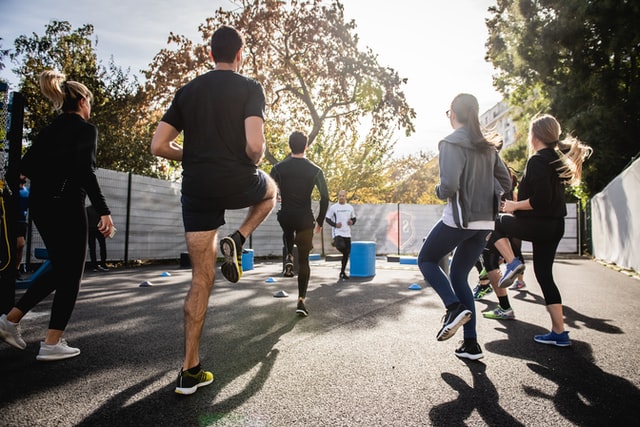Your body needs energy to function properly. Calories are a way to measure this energy. If you eat more calories than you need to fuel your lifestyle, your body stores excess calories as fats, causing you to gain weight. When trying to lose weight, you need to eat fewer calories and increase the amount of calories you burn. So how do you burn calories? You burn calories by moving more! Exercise can be intimidating but it doesn’t have to be! All movement burns calories so start with increasing your activity throughout the day. Walking is a great way to start.
Tips for Increasing Activity:
- park further away from your destination
- vacuum the house this week
- take the stairs instead of the elevator
- walk 15 minutes before lunch
- hand deliver a note to a co-worker instead of using email
There are 3,500 calories stored in a pound of fat. If you burn 500 more calories than you eat each day for a week, you are on track to lose a pound of fat. This can be done, for example, by eating 300 less calories and burning 200 calories in exercise each day. Burning calories with exercise depends on the type of activity you do, intensity, time spent, and your size. The Department of Health and Human Services recommends working up to a goal 300 minutes of moderate to intense physical activity per week to effectively lose weight. Your exercise should be spread throughout the week in blocks of at least 10 minutes.
Common Types of Activity and Approximate Calories Burned
| Activity (30 –minutes duration) | Weight of person | ||
| 160 pounds | 200 pounds | 240 pounds | |
| Walking, 2 mph | 100 calories burned | 130 calories burned | 150 calories burned |
| Walking, 3 mph | 160 calories burned | 195 calories burned | 235 calories burned |
| Running, 5 mph | 300 calories burned | 380 calories burned | 450 calories burned |
| Resistance(weight) training | 180 calories burned | 230 calories burned | 279 calories burned |
| Swimming laps | 210 calories burned | 265 calories burned | 315 calories burned |
| Water aerobics | 200 calories burned | 250 calories burned | 300 calories burned |
| Rope jumping | 430 calories burned | 535 calories burned | 645 calories burned |
| Tennis, singles | 290 calories burned | 365 calories burned | 435 calories burned |
| Volleyball | 145 calories burned | 185 calories burned | 220 calories burned |
| Golf, carrying clubs | 157 calories burned | 195 calories burned | 235 calories burned |
| Bicycling, <10 mph (leisure) | 145 calories burned | 180 calories burned | 220 calories burned |
Exercise doesn’t just help you burn calories and lose weight, it improves your health. Exercising regularly improves cardiac risk factors such as cholesterol, blood pressure, diabetes, obesity, vascular inflammation and stiffness, and mental stress. It also helps protect against dementia, depression, colon cancer, and even erectile dysfunction.

